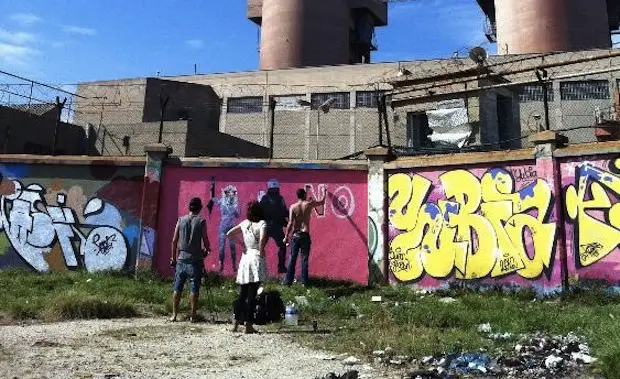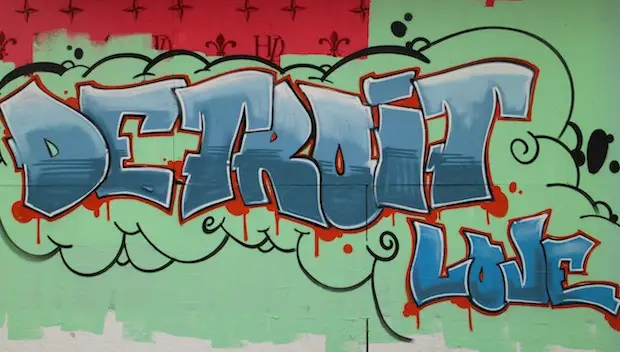Like with other planning-related narratives, the one told about America’s “freeway revolts” usually describes their effect on its most notable cities. One of the more famous of these revolts, for example, occurred in the 1960s in San Francisco, where plans would have sent the Central Freeway from south of downtown to the Golden Gate Bridge, defiling several historic neighborhoods in-between. But because of protests it was only partially completed, and after damage from the 1989 earthquake, was further torn down and replaced with the tasteful Octavia Boulevard.
Another revolt came a decade later against the Mount Hood Freeway, which would have divided eastern Portland. Rather than building it the city redirected funds to light rail, establishing a nationwide trend towards alternative planning. The Vieux Carre Riverfront Expressway in New Orleans would’ve run adjacent to the very neighborhood—the French Quarter—that it was named after, but was eventually nixed by local leaders. And of course the Lower Manhattan Expressway would’ve demolished much of the borough’s southern portion, but was defeated in the infamous neighborhood battle between Jane Jacobs and Robert Moses.
But one project less talked about—although equally devastating—would have been the East-West Expressway proposed in the 1960s for Baltimore. This reflected previous plans, also drawn by Moses, to connect the city’s east and west sides by going through the heart of downtown and neighboring “slums.” The purpose of this later plan was to connect three newly-built interstate highways, which ran up to the city’s peripheries, with a series of boulevards that looped around downtown. Coming from the west, the expressway would extend I-70 from the city border to downtown’s western edge by becoming “I-170”, an elevated thoroughfare that ran through the heavily-residential Mulberry-Franklin corridor. This would connect both with a newly-built boulevard running north-south, and with an extended version of I-83 from the north. From there I-170 would continue east down Pratt Street and along the city’s main waterfront, before crossing the harbor to link with I-95.
The purpose of the 22-mile expressway, which would be paid for on a 90/10 federal-to-local spending ratio, was to increase connectivity to downtown and the city’s port. But it also would have done a great deal of disconnecting. Following what was its proposed path means walking today through some of Baltimore’s most functional neighborhoods—including the architecturally-stunning central business district; the heavily walkable Pratt Street; the iconic Inner Harbor; the emerging Harbor East condo district; and the historic Fells Point, which is decked in cobblestone streets and brick sidewalks. It is hard to imagine any of these areas, nice as they are, with a double-decker expressway steamrolling through them.
Had that happened, they would instead look like the areas around where the project did get built. These include the parts north of downtown where I-83 was extended to, and the downtown boulevard, which was renamed after Martin Luther King, Jr. Both structures divided otherwise cohesive neighborhoods, and displaced thousands of mostly black residents. Even worse was the portion of I-170 that got built along the Mulberry-Franklin corridor. It was so unpopular that it was cancelled midway through construction in the 1970s, and today is a 6-lane underpass that runs for a mile west of downtown, before turning abruptly back into a narrow city street—earning it the nickname “Highway to Nowhere.” For years the city has considered demolishing it, because of its underuse and its blightening effects, but hasn’t had the money to. Meanwhile the expressway’s eastern portion was cancelled altogether, in a battle that pitted Mayor Donald Schaefer against Fells Point residents like then-councilor and current U.S. Senator Barbara Milkulski.
The whole plan was an example of how counterintuitive can be the relationship between infrastructure and economic growth. While projects like highways are meant to propel growth by making areas more accessible, they can also eradicate what makes them worth visiting altogether, causing decline instead. This is what would’ve happened in Baltimore—and is unfortunately what did happen in so many other cities.
The inability to recognize this underlies the folly that was Robert Moses. While famous for remaking New York City, Moses also worked as a consultant nationwide, proposing this expressway and others mentioned above. His projects were concocted from a distance, and like with much of the infrastructure today, were approved at local levels only for fear of losing federal money. But what they caused instead were revolts by the citizens on grounds; and oftentimes the more successful these revolts were the better, since they helped save the most vibrant parts of San Francisco, Portland, New Orleans, et al.
Scott Beyer is living in different cities on a month-to-month basis to write the chapters of his new book about revitalizing U.S. cities. He blogs at Big City Sparkplug.
Photos: tom32i


